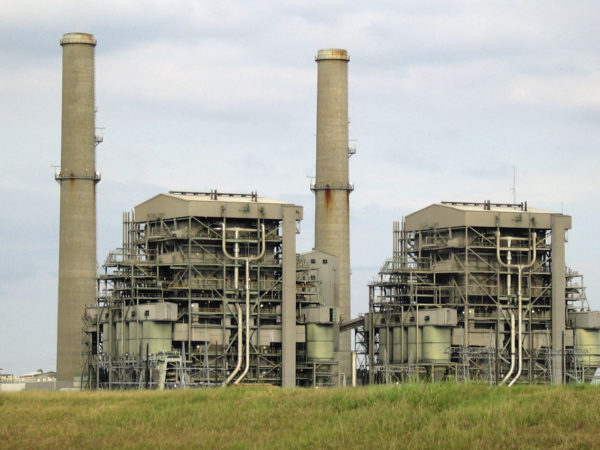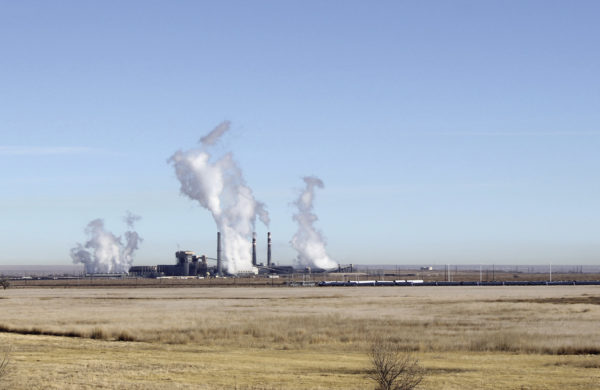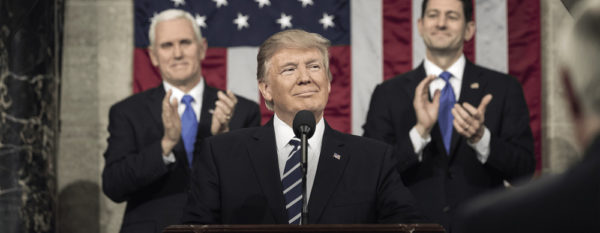As he is one of the most powerful individuals in the world, it is tempting to try to understand U.S. President Trump’s opinions regarding solar and other forms of renewable energy. But ultimately, this may be asking the wrong question.
It is not the personal opinions of the idiosyncratic 45th President of the United States that will affect the U.S. and the global solar industry, but the policies of his administration. This is an area of great consequence, particularly as the policies put forth by actors including Energy Secretary Rick Perry and Environmental Protection Agency (EPA) Administrator Scott Pruitt have shown a disregard for climate change and environmental impacts and a preference for expanded fossil fuel infrastructure.
A deeper look at electricity sector policies reveals that the actions of this administration to date have not been so much anti-renewable as pro-coal and pro-nuclear. This is nonetheless problematic for solar, wind, and battery deployment, as in our current environment of flat demand growth, electricity supply is something of a zero-sum game.
Slightly more than one year after Trump was elected, there are currently four primary areas of policy concern for solar and other forms of renewable energy under the new administration: repeal of the Clean Power Plan, the Notice of Proposed Rulemaking (NOPR) for coal and nuclear compensation, tax reform, and the Section 201 solar trade case.
Clean Power Plan
In terms of the Trump Administration’s climate and energy policies, at least initially much of the mainstream media attention has been focused on the dismantling of the Clean Power Plan (CPP). Since his campaign Trump has been promising to repeal CPP, and the EPA is currently conducting a review of the policy, with the aim to gut it, if not repeal it entirely.
However, there is a big disconnect between the significance of the CPP as a symbol of the U.S. Federal Government taking action on climate change, and the potential impacts of CPP, particularly as regards renewable energy markets.

As has been articulated by Nathan Serota of Bloomberg New Energy Finance, CPP was a trend-following, not a trend-leading policy, and the level of ambition in the plan has often been overstated by those not familiar with the details.
One of the factors that greatly weakened CPP’s potential impact on renewable energy markets was moving back the plan’s first compliance period to 2022, and for such a time frame the calibration of associated policies and deployment targets is unambitious. When pv magazine interviewed Serota on CPP in September 2016, he noted that if states were to band together, there would not need to be any increases in new renewable energy built, including solar, to meet the targets.
“The timing period is so far out, and the potential impact for the solar industry is so intangible, that it is not possible to incorporate CPP into business planning if you are a solar developer today,” noted Serota.
However, both Serota and GTM Research have argued that there is a potential upside to the plan, which will be gone if it is repealed. This includes sending a long-term signal to utilities to plan for decarbonization of their electricity supply.
GTM Research Solar Analyst Colin Smith also argues that there are emerging state solar markets, particularly in the Midwest and the Plains States, that might have been pushed to adopt solar if CPP was in place. “The upside potential on a whole on the national level was really high,” Smith told pv magazine. “It is not an insignificant loss to have the CPP go away.”
However, this upside potential is both uncertain and inherently hard to quantify. Overall, loss of the CPP seems to be the least of the solar industry’s policy concerns.
The NOPR
In contrast to the many intangibles that come up when discussing CPP, the Notice of Proposed Rulemaking (NOPR) on payments to coal and nuclear power plants which the Federal Energy Regulatory Commission (FERC) is currently considering is a much more concrete policy move.
The NOPR originated as a directive from Energy Secretary Rick Perry to FERC, to come up with an emergency rule to bail out sources of “fuel-secure” generation. This in turn is defined as plants with three month stockpiles of fuel, which by doing so limits it to coal and nuclear generation. As has been revealed in a series of investigative articles by Bloomberg and E&E news (an online energy and environmental publication) this proposed rule appears to have been written by former and current coal lobbyists, some of whom have gone to work for the Department of Energy (DOE).
The political process of NOPR is a train wreck. It is abundantly clear that Secretary Perry’s DOE grid study was an attempt to provide a rationale for such a move. However, neither the leaked draft nor the final study supports the conclusion that coal and nuclear power plants going offline represents a threat to the reliability of the electric grid.
In attempting to push this motion through FERC, DOE is running up against resistance from most players in the electricity sector. While this was expected from the solar and wind industries, opposition to the NOPR is also coming from a broad array of other interests including the oil and gas industry, large power users and power companies – including those like NRG that own units that would benefit from such a bailout. A primary concern expressed by many stakeholders is that subsidizing uncompetitive power plants to keep them online will ruin the price signals in wholesale power markets. In fact, the NOPR represents such a threat to market function that no less than eight former FERC commissioners and chairs have written to the current FERC warning of this danger. Experts at Energy Innovations and Climate Policy Initiative who pv magazine has spoken with confirm that such market changes could affect renewable energy deployment.

Several factors mitigate this danger. FERC’s proposed rule will be limited to a section of wholesale power markets in the Midwest, Plains States, and Northeast, including New England. Huge swaths of the nation, including the entire West and South (including Texas), are outside of its scope. However, as with CPP repeal, some of the areas that could be affected by the NOPR are potential future growth markets for solar, which could be cut off.
FERC Commissioner Cheryl LaFleur is among those who expressed that the NOPR, as currently designed, is not sufficiently detailed for a final rule. Instead, Chairperson Neil Chatterjee is looking to finalize an interim support, which would leave the NOPR to drag through the more thorough process at FERC.
However, it is unclear whether any interim support will have the support of Chatterjee’s colleagues in FERC, who have expressed an unwillingness to “blow up” power markets per the NOPR. And even if Chatterjee is able to get other commissioners on board, the NOPR faces the strong likelihood of legal challenges. Ari Peskoe of the Harvard Environmental Policy Initiative has warned that the NOPR is “legally unsalvagable,” arguing that it does not follow certain requirements of federal law. So, while the NOPR does represent a concrete policy move that could affect solar markets, the future of the rule is uncertain, and there is a possibility that the bailout for coal and nuclear plants could be held up in courts.
Tax reform
One of the more significant threats to U.S. solar through the Trump Administration is a somewhat indirect one. At the time of writing this article, the U.S. House had passed a tax reform bill, and the Senate was considering a slightly different bill along the same lines. And while neither version targets the elimination of the U.S. Investment Tax Credit (ITC) before 2027, that does not mean that there will be no effects.
The House bill makes tweaks to which projects qualify as being under construction. Much more serious is the proposal to lower corporate tax rates overall, which could result in a reduced appetite by corporations to supply tax equity.
But by far the most serious threat to solar (and wind) is a provision in the Senate tax bill call Base Erosion Anti-Abuse (BEAT), which could create serious problems for monetization of the ITC. According to a letter sent by Solar Energy Industries Association (SEIA) and other trade groups to the Senate, BEAT could result in the imposition of a 100% tax on the ITC for multinational corporations, which would cause major financial institutions to withdraw from tax equity financing deals. As this article went to press it was unclear if SEIA and other trade groups would be able to get an exemption to BEAT in tax reform, however given the rapid pace of the tax bill in the U.S. Senate this represented a real threat.
Section 201
With the possible exception of the impact of tax reform on tax equity financing, for many in the solar industry, the greatest current threat from the Trump Administration is the potential for dramatic trade action on solar imports. September’s finding at the International Trade Commission (ITC) that foreign imports have damaged the domestic PV cell and module manufacturing industry gives Trump the ability to impose trade sanctions of his choosing on imports from the rest of the world. The question now for many people is not whether or not Trump will act on that, but the kind and level of trade action that will be imposed.
The potential outcome is far from clear. In its October remedy ruling, the four commissioners at the ITC gave three different recommendations for trade action, all of which were much less severe than the combinations of tariffs and a minimum price or import quotas which Suniva and SolarWorld are asking for. However, these are only recommendations,
and the Trump Administration can do whatever it wants – which means that it can simply rubber-stamp some set of ITC recommendations, it can take Suniva and SolarWorld at their word and issue more severe trade action, or it can do something else entirely.
This is an area where Trump’s personal opinion is highly relevant. It is clear from both Trump’s public actions and leaked private statements that he is very much a protectionist, and would like to use tariffs as a tool. And it is notable that the Trump Administration has been willing to alienate even the USA’s closest allies over trade issues, as seen in the conflicts with Canada over softwood lumber.
If Trump does impose harsh tariffs, quotas, or other measures, one important detail will be if he follows the recommendations of the ITC and excludes Singapore from the ruling. As long as Singapore remains exempt from tariffs, the U.S. market will be able to benefit from up to 800 MW of tariff-free modules from REC Solar’s facilities, which could be a lifeline for a U.S. market in the first few years, until more domestic manufacturing can be built to meet demand.
But even if Singapore is exempt, a combination of stringent tariffs and/or import quotas could have a significant effect on the U.S. market. This is particularly true for the 2018/2019 time frame and for the utility-scale solar sector, which is more dependent upon inexpensive modules than distributed solar is.
The numbers provided by analysts are stark. GTM Research has predicted a 50 – 66% decline in the U.S. solar market over the next five years compared to its reference case if tariff levels and the minimum import price that Suniva has proposed are implemented. Meanwhile, IHS Markit is expecting a 28% reduction in the U.S. market from 2018 through 2021, again compared to its reference case, if tariff levels similar to what both petitioners are calling for are enacted.
The big picture
The Trump Administration’s preference for fossil fuels and nuclear power, as well as Trump’s personal protectionist streak, are all concerns for the solar industry. And while trade action and tax reform are easily the most dangerous of these moves in terms of likely impact to the U.S. market, the combination of these four does not bode well for the U.S. solar industry.
If there is a ray of hope, it is that the Trump Administration has not been very good at making policies that hold up under legal scrutiny. Trump’s three failed bans on travel from certain Middle Eastern nations provide a good example of a situation where one of the President’s core goals was not achieved.

Another example is the failure to repeal the Affordable Care Act, which shows the Trump Administration’s ability to engender opposition from a broad range of forces, while failing to keep order within the ranks of its own party.
On a more fundamental level, proposals like the NOPR are not moves to support industries that are potent and growing, but can instead be seen as desperate actions to protect failing forms of power. In an age of low-cost gas and renewable energy, existing coal and nuclear technologies simply cannot compete in the market, and viable new coal and nuclear designs are a long way off, with no guarantee that they will ever deliver.
As pv magazine stated following the 2016 election, the presence of Donald Trump in the White House is not good news for solar. While the Trump Administration’s attempts to prop up coal and nuclear may be problematic in the near term, in the long run the market advantages of solar and wind are undeniable.
Four years ago, solar and wind were fighting an uphill battle against incumbents; today it is coal and nuclear that are fighting to survive. The Trump Administration can delay the future from arriving, but even the President of the United States cannot stop the energy transition.
This content is protected by copyright and may not be reused. If you want to cooperate with us and would like to reuse some of our content, please contact: editors@pv-magazine.com.
